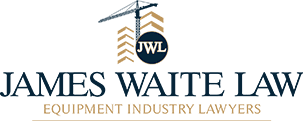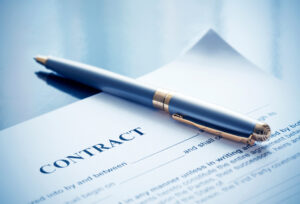After nearly 10 years of offering damage waivers at Busylad Rent-All in Tupelo, Miss., the company’s president, Buddy Stubbs, says, “There’s no reason in my mind not to charge a damage waiver.”
Like others, Stubbs and his employees had some doubts about damage waivers before they actually began offering them to customers. They wondered whether it was fair to customers or would increase conflict at the counter. Still, they found success with their damage waiver program, and you can, too, by following these simple steps.
1. Get professional assistance. Stubbs hired Dick Detmer, president of Detmer Consulting in Geneseo, Ill., to come in to help set up his company’s damage waiver program properly. “It was easier convincing my folks by getting someone in from the outside,” Stubbs admits.
2. Sell the owner and employees on the idea. When Stubbs first mentioned offering damage waivers, his employees were against the idea. Detmer was able to explain the damage waiver to them and its benefits for customers. According to Detmer, “The rental business operator really has to be a believer that [the damage waiver] is going to work and that it is a positive thing for customers.” Detmer also feels that employees must believe that a damage waiver is fair.
3. Provide employees training on the damage waiver. Detmer trained those at Busylad Rent-All on how to offer a damage waiver, the reasons for offering it and how it benefits both the company and the customer. The employees also learned what damage waivers do and do not cover.
4. Introduce the plan adequately to customers. Busylad Rent-All sent a letter to charge customers telling them what a damage waiver covered, when it would go into effect, its cost and their right to either accept or decline it. See the “Sample damage waiver introductory letter” article in this newsletter for an example letter.
“For cash customers, we printed fliers that we put on the counter explaining a damage waiver,” Stubbs says. This flier provided answers to questions such as: what is a damage waiver, how much does it cost, how does it work, what does it cover, what is not covered and what is gross negligence.
Sample Damage Waiver Contract Language
James Waite, an attorney specializing in the equipment rental industry, provided the following sample of a damage waiver contract. ARA provides this sample only to inform readers of common damage waiver language and strongly recommends that readers seek the advice of an attorney before creating their own damage waiver contract. To arrange a consultation with Waite, you can reach him by e-mail at info@jameswaiteconsulting.com
Equipment Protection Plan.
The Equipment Protection Plan we offer is a Damage Waiver. IT IS NOT INSURANCE, NOR IS IT A WARRANTY. [If you maintain your own insurance covering all damage to or loss of the Equipment and provide us with proof of such insurance, you may decline the Equipment Protection Plan by placing your initials in the space provided for that purpose on Page 1].1 If you accept the Equipment Protection Plan, we will, subject to the “Exceptions and Exclusions” set forth below, waive our right to recover from you our direct cost to repair or replace Equipment which is damaged or destroyed while in your possession; provided however, that (a) you will be responsible for the first $________ of the cost of such repair or replacement, and (b) if you have insurance of your own covering such damage, you agree to promptly exercise all rights under such policy to make a claim for any amounts available thereunder with respect to such damage, and/or at our option, assign the claim (or the proceeds thereof, as applicable) to us as soon after the occurrence of the event giving rise to such claim as reasonably practicable.
Exceptions and Exclusions: The foregoing notwithstanding, the following are not covered under the Equipment Protection Plan, and you will remain liable for each:2
(a) Your failure to return any item of Equipment for any reason (including without limitation, loss, theft and destruction);
(b) Damage to any item of Equipment due to improper use, negligence, neglect (including failure to protect during periods of inclement weather);
(c) Damage to any item of Equipment due to operation of the Equipment in a manner inconsistent with the instructions provided by us and/or the OEM;
(d) Damage to any item of Equipment due to exceeding the rated capacity of such Equipment;
(e) Damage to tires, tubes, and wheels (whether or not part of the Equipment) however caused (including without limitation, heat, cold, weight, yaw, rough terrain, potholes, cuts, punctures and blowouts);
(f) Damage resulting from failure to properly clean or maintain the Equipment, including without limitation, failure to maintain proper pressure levels or proper levels of oil, fuel, lubricants, hydraulic fluid, brake fluid and/or coolant;
(g) Damage resulting from loading or unloading the Equipment; and
(h) Damage arising from the use of the Equipment in a manner that violates the terms of this Contract or applicable law.
1This language, which requires the Customer to maintain its own insurance on the Equipment if the Equipment Protection Plan is to be waived, is generally more appropriate for use with respect to large equipment, as it would generally be impractical to require proof of such insurance with respect to small equipment.
2The exceptions included in this Damage Waiver provision are intentionally over-inclusive; the purpose is to provide the reader with a large selection of provisions from which to choose.







